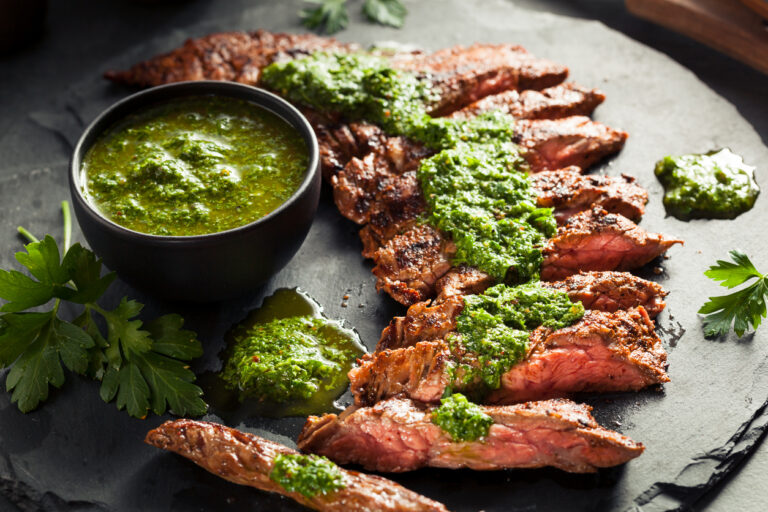Introduction: Argentine Cuisine
Argentine cuisine is known for its hearty and flavorful dishes that are influenced by European, indigenous, and African cultures. Meat, especially beef, is a staple ingredient in Argentine cuisine and is usually cooked on a grill, or asado, which is a popular method of cooking. Alongside meat, many other local ingredients play a significant role in Argentine cuisine, making it unique and diverse.
Meat: the Main Ingredient
As mentioned, beef is the most commonly used meat in Argentine cuisine. It is usually cooked simply with salt and pepper on a grill, and served with chimichurri sauce. Other meats such as pork, lamb, and chicken are also used in Argentine cuisine but are not as popular as beef. The meat is often served with traditional sides such as empanadas, salad, and chimichurri.
The Power of Chimichurri
Chimichurri is a sauce made with finely chopped parsley, oregano, garlic, vinegar, and oil. It is served alongside meat dishes and often used as a marinade. The sauce is also a popular condiment for sandwiches and can be used as a dipping sauce for bread. Chimichurri is a staple in Argentine cuisine and is widely loved for its bold flavors.
Corn: A versatile crop
Corn is a versatile crop that is used in many Argentine dishes. It is often ground into flour and used to make bread, empanada dough, and tamales. Corn is also used to make humitas, which are similar to tamales but are made with fresh corn, cheese, and spices. Corn is also used in soups and stews, and it is a common side dish served with meat.
Dulce de Leche: A Sweet Delight
Dulce de leche is a sweet caramel-like sauce made from condensed milk. It is a popular dessert ingredient in Argentine cuisine and is often served with pancakes, crepes, and ice cream. It can also be used as a filling for cakes and pastries. Dulce de leche is so popular in Argentina that it is sometimes referred to as the country’s national dessert.
Empanadas: A Portable Snack
Empanadas are small pastry pockets filled with meat, cheese, vegetables, or a combination of all three. They are a popular snack and can be found in almost every corner of Argentina, from street vendors to high-end restaurants. Empanadas are traditionally baked, but they can also be fried. They are a convenient and portable snack that can be enjoyed on the go or as a light meal.
Mate: The National Drink
Mate is a traditional drink made from the leaves of the yerba mate plant. It is a social drink that is shared among friends and family. Mate is usually served in a gourd with a metal straw, and it is a common sight to see people carrying their mate around. The drink is known for its bitter taste and is often sweetened with sugar or honey.
Wine: The Perfect Pairing
Argentina is known for its wine, especially its red wine. The country has a long history of winemaking, and the vineyards are located in some of the most picturesque landscapes in the world. Argentine wine is known for its bold flavors and is a perfect pairing for meat dishes. Malbec is the most famous wine produced in Argentina, but there are many other varietals to choose from. Wine is an integral part of Argentine cuisine, and it is almost always served with food.
In conclusion, Argentine cuisine is a reflection of the country’s diverse cultures and traditions. Local ingredients such as beef, corn, and dulce de leche play a significant role in the cuisine, making it unique and flavorful. Whether it’s a simple grilled steak or a hearty empanada, Argentine cuisine is sure to satisfy any appetite.










